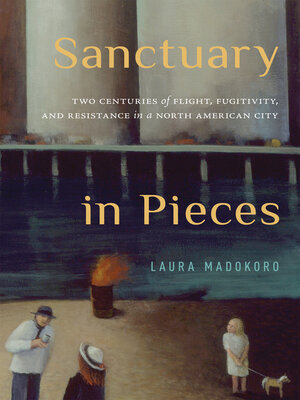Sanctuary in Pieces
ebook ∣ Two Centuries of Flight, Fugitivity, and Resistance in a North American City · McGill-Queen's Refugee and Forced Migration Studies
By Laura Madokoro

Sign up to save your library
With an OverDrive account, you can save your favorite libraries for at-a-glance information about availability. Find out more about OverDrive accounts.
Find this title in Libby, the library reading app by OverDrive.



Search for a digital library with this title
Title found at these libraries:
| Library Name | Distance |
|---|---|
| Loading... |
Over the past two decades, the Sanctuary City movement has resulted in hundreds of jurisdictions declaring themselves safe spaces for undocumented migrants and people without status. Although they often draw on historical precedent, public sanctuary efforts amongst settler societies are markedly different from how refuge was conceptualized in the past.
To explore these broad shifts, Sanctuary in Pieces looks at the history of protection and hospitality in Montreal/Mooniyaang/Tiohtià:ke over two hundred years. Laura Madokoro traces the movements and experiences of fugitives from slavery, wanted criminals, internationally renowned anarchists, and war resisters before turning to instances of public sanctuary practices since the 1970s. As people sought and forged refuge, they navigated a web of social connections, political agendas, and economic realities, testing the notion of the city and whom it was for. Even as those in search of sanctuary imagined, and often enacted, possible futures in the city, sanctuary was far from easy: it lay in an underground marked by refusal and denial, selective compassion and solidarity, and sometimes outright animosity. This contested and tumultuous history offers a profound challenge to the symbolism and substance of contemporary sanctuary city efforts.
Conceptually innovative, Sanctuary in Pieces speaks to activist and policy considerations in the present, the making and unmaking of community, and how historical practice can accommodate silence in studies of intimate experiences of mobility and, on occasion, refuge.







